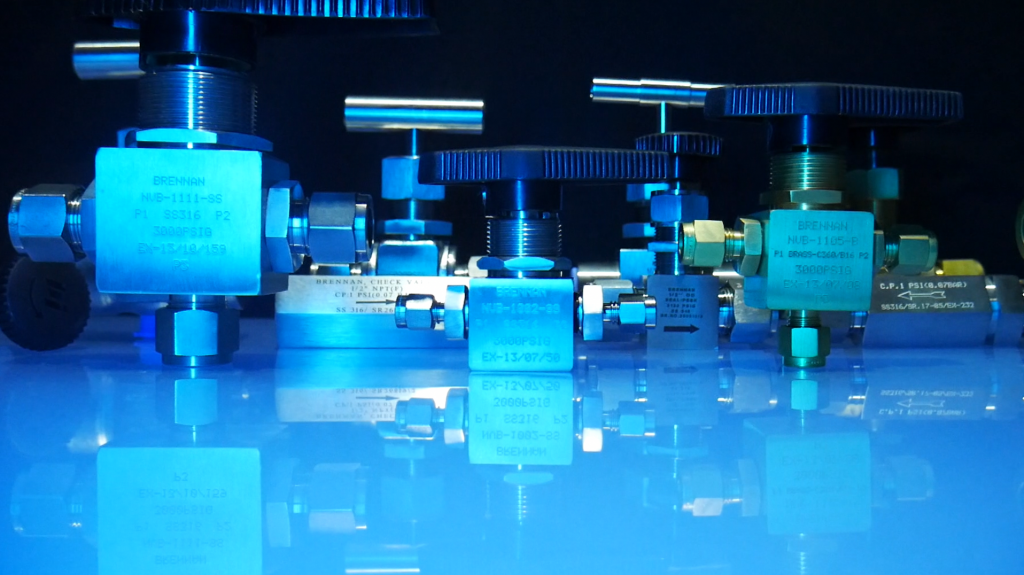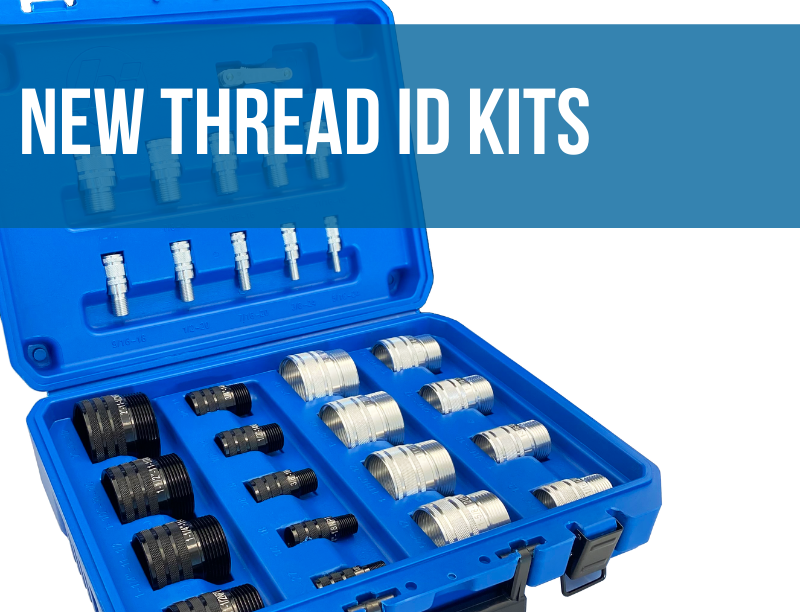Connection Type: Instrumentation Ball Valves
What are Instrumentation Ball Vales?
Instrumentation ball valves are widely used in process measurement and control systems in food & beverage, medical equipment, transportation, chemical processing, water treatment and oil & gas industries. Popular ball valve designs are available in stainless steel and brass. They incorporate one-piece packing for clean and accurate samples as well as designs that allow for a drop-in fit for easy replacement of the packing. Brass instrumentation ball valves are rated for pressures up to 3,000 PSI and temperatures to 350°F, while stainless steel instrumentation ball valves are rated for pressures up to 10,000 PSI and 450°F.
A ball valve consists of a ball-shaped component containing a port through its center to stop or start fluid flow. Flow occurs when the port is aligned with both ends of the valve. In terms of operation, when the valve handle is turned to the open position, the ball rotates to where the port through the ball moves in line with the valve body inlet and outlet. When the valve is shut, the ball is rotated so that the port closes the glow opening of the valve body and the flow is stopped.
Disadvantages of Using Instrumentation Ball Valves:
- The ball design offers relatively poor throttling characteristics
- The throttling position can lead to rapid erosion due to the seat’s exposure to high velocity flow
- Not suitable for slurry applications as the entrapment of particles in the valves ball and seats lead to wear, leaks, or failure of the valve
Advantages of Using Instrumentation Ball Valves:
- Readily available and offer a large variety of sizes, shapes, combinations, and materials
- They are generally the least expensive of any valve configuration
- Carry low maintenance cost
- Most ball valve actuators are of the quick-acting type, which only require a quarter turn of the valve handle to open and shut the valve
- The design makes visual indication of flow a viable option
- Are compact in design
- Do not require any lubrication
- Provide a fluid tight seal with relatively low torque administered
There are many similar varieties of instrumentation valves. One example, the instrumentation needle valve, is similar in many aspects to an instrumentation ball valve, but uses a long tapered needle, sometimes referred to as a plunger to regulate flow. There are many varieties of the instrumentation valves and many different applications in which they are used. For these reasons, care needs to be taken to properly identify the right connection to create a safe and leak resistant seal.






